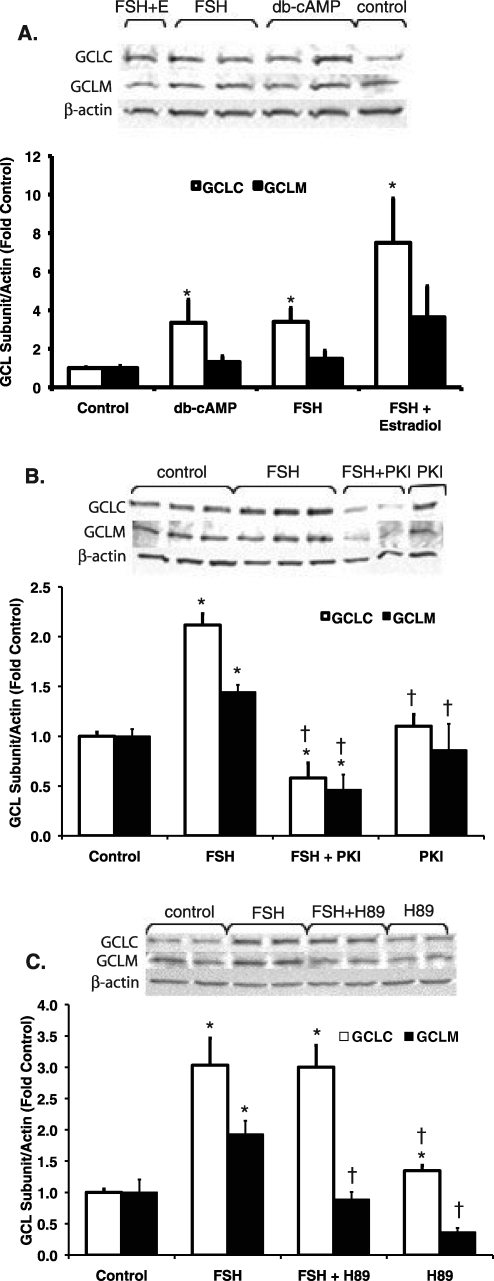FIG. 6.
Involvement of cAMP/PKA signaling in the FSH-induced increase in GCL subunit protein levels in granulosa cells. Cells were cultured in serum-free medium alone (control), with 20 ng/ml FSH, with FSH plus 100 ng/ml estradiol, or with 1 mM dbcAMP (A); presented as db-cAMP or (B and C) FSH plus PKA inhibitor or inhibitor alone (50 μM PKI or 10 μM H89). Cells were pretreated with PKA inhibitors for 1 h before FSH was added. Protein was extracted and subjected to immunoblotting for GCLC, GCLM, and β-actin as described in Materials and Methods. Graphs show the mean ± SEM of the β-actin-normalized densitometry expressed as fold change from the control for the same blot. Representative Western blots are shown above each graph. A) The effect of treatment group was statistically significant for GCLC (P = 0.006 by Kruskal-Wallis test). Dibutyryl cAMP stimulated GCLC protein to a similar extent as FSH (n = 5–6 per treatment group). *Significantly different from control, P < 0.01 by Mann-Whitney test. B) The effects of treatment group on GCLC and GCLM were statistically significant (P < 0.001 by ANOVA). PKI prevented the stimulation of GCLC and GCLM protein by FSH (n = 5 per treatment group). *Significantly different from control, P < 0.02 by LSD test. †Significantly different from FSH, P < 0.02 by LSD test. C) The effects of treatment group on GCLC and GCLM were statistically significant (P = 0.005 by Kruskal-Wallis test for both subunits). H89 prevented the stimulation of GCLM, but not GCLC, protein by FSH (n = 4 per treatment group). *Significantly different from control, P < 0.03 by Mann-Whitney test. †Significantly different from FSH, P < 0.03 by Mann-Whitney test.

